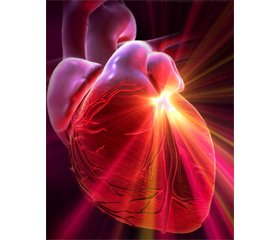Международный неврологический журнал 7 (69) 2014
Вернуться к номеру
S100β protein as a prognostic marker for cerebral injury in neonatal cardiac surgery with autochemotransfusion
Авторы: Tkachenko Y.V., Zhovnir V.A., Vorobyova G.М. – Government institution «Тhe scientific-practical children''s cardiac center»
Рубрики: Неврология
Разделы: Клинические исследования
Версия для печати
Background: Surgical correction of critical congenital heart disease (CHD) using cardiopulmonary bypass (CPB) usually requires homologous blood transfusion. It’s associated with risk of transmissible infections and immunological complications, especially in neonates. Autologous umbilical cord blood (AUCB), which contains biologically active substances, is an alternative source of blood. But using of AUCB in open cardiac surgery has not been applied. The release of neuron-specific astroglial S100 protein to the cerebrospinal fluid is a marker of cerebral damage. S100 is a calcium binding protein present in the CNS. The dimers αβ and ββ of S100 are mainly specific for the nervous system and present chiefly in the astroglial cells of the CNS. There are a few studies on S100 in serum of infants. S100 in serum has been shown to be a possible marker of postperfusion cerebral injury after pediatric cardiac operations. Circulating S100 protein was increased in IUGR fetuses and correlated with cerebral hemodynamics, suggesting that it may represent an index of cerebral cell damage in the perinatal period.
The aim of this study was to determine the pattern of release of S100 protein to serum after pediatric cardiac operations and extracorporeal circulation on using autologous umbilical cord blood.
Materials and methods: Sequential blood samples from 28 neonates with CHD: First group consists of 10 neonates who receive AUCBT only during surgery and ICU stay. Second group include 18 neonates which underwent surgical repair using homologous donor blood. As a control group we chose 20 samples cord blood from healthy newborns without any cardiac malformation. We determined S100β protein before and after (on the 1st, 3rd, 7th days) corrective cardiac operations in neonates. S-100 protein concentration was analyzed by ELISA in the machine Multiskan Ascent V1.24, sets CanAg S100 EIA (Fujirebio Diagnostics Sweden).
Statiatical analysis. Nonparametric tests were used (Median, 25–75 percentile). Correlations were made by Spearman's test, and for comparison of continuous variables betweeen groups, Mann – Whitney test was used.
Results: As a result of studies neonates of the 1st group had no significant differences mean of S100β in serum from control group before the operation. Previously, we have investigated the Hypoxia-inducible factor 1-alpha (HIF-1α). HIF-1α functions as a master transcriptional regulator of the adaptive response to hypoxia. The correlation analysis between HIF-1α and S100β protein was a strong correlation r = 0.96, p < 0.05 in neonates 1st group before the operation. And correlation of medium strength r = 0.55, p < 0.05 between S100β protein and HIF-1α in neonates of 2nd group at 1st day after surgery.
Neonates of the 2nd group y were 3–7 days of age before surgery and received a course of therapy to eliminate the hypoxic condition. Their level of S100β protein in serum was significantly lower for control.
On the first day after surgery 80 % of patients of the 1st group had a significant decrease mean of S100β in serum compared to operating before. Patients of 2nd group S100β increased in serum at the 1st day after surgery compared with mean before the operational. 50 % of patients of 2nd group at the 1st day after surgery had a statistically significant increase mean S100β in serum, 11 % of patients in this group had remained unchanged mean S100β in serum, 39 % of 2nd group had slight decrease mean S100β in serum. MRT diagnosis showed 57 % of patients of 2nd group of brain white-matter lesions.
Conclusions: Our research demonstrated the ability of autologous umbilical cord blood to prevent damage to the nervous tissue during extracorporeal circulation. The use of autologous umbilcal cord blood in neonatal cardiac surgery is safer in compare to allogeneic donor blood transfusion.

